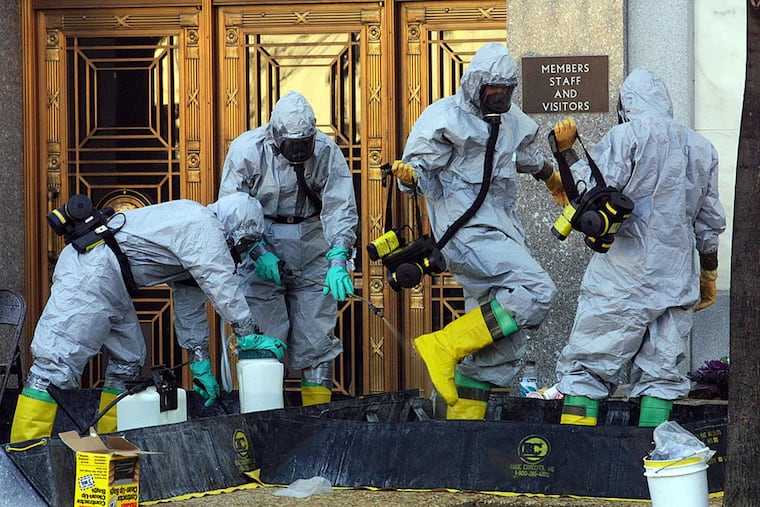20 years after anthrax panic, America is still at risk for biological threats | Opinion
Congress should immediately defund BioWatch and move forward to find a technology that actually works.

Nearly 20 years since letters laced with deadly anthrax spores caused a panic across the country, the United States finds itself with a national biodetection system that does not work. It’s alarming and unacceptable.
Although people died and became seriously ill during the anthrax events of 2001, the biological threat is obviously still with us. Today’s intelligence reports confirm that some nation-states and terrorist organizations are actively seeking to weaponize biological agents and attack the United States and its interests overseas. The biological threat is real. Despite this fact, the government has taken far too little meaningful action. Our mounting frustration over inaction in Washington on this issue is one of the reasons we serve on the Bipartisan Commission on Biodefense.
The commission convened for the first time more than six years ago because we recognized the severity of the threat and the inversely proportional national preparedness for a large-scale biological event. In the hopes of preventing calamity, we produced our foundational report, A National Blueprint for Biodefense: Leadership and Major Reform Needed to Optimize Efforts, in 2015. In it, we noted that the nation was dangerously vulnerable to naturally occurring pandemics, terrorist attacks using biological weapons, and accidental releases of deadly organisms from laboratories. After assessing the totality of federal biodefense policies and programs, we described exactly how the government could prevent, deter, prepare for, detect, respond to, attribute, recover from, and mitigate a biological event affecting national security. Despite providing that blueprint, however, the government has done too little since then in response to our warnings and recommendations.
Unfortunately, the COVID-19 pandemic proved us correct. The disease has inflicted great human and economic losses upon our country and the current spotlight on COVID-19 is necessary and urgent. However, we cannot focus solely on this pandemic to the exclusion of all other biological threats.
Nation-states such as China, Iran, North Korea, and Russia have invested and continue to invest heavily in advancing biotechnology, much of which is dual-use, that could generate large quantities of biological agents and weapons and result in horrific consequences. Terrorist organizations also remain interested in gaining the asymmetric advantages that bioterrorism affords them and they continue to place materials online to show their members how to conduct attacks with anthrax, botulism, and other biological agents.
Current BioWatch technology — federally developed and supported detectors placed in Philadelphia and other large cities across the nation that are supposed to quickly identify a biological agent in the air — performs poorly and is far from the deterrence mechanism it was originally intended to be. BioWatch detectors, when they work, only provide useful data hours or days after an event. We appreciate that the Department of Homeland Security heard our concerns and is looking into replacing outdated nonfunctional BioWatch technology. Unfortunately, Biodetection 21, the DHS acquisition program to identify and acquire new biodetection technology, has its own difficulties. So BioWatch continues to use limited, decades-old collection equipment and pair it with more advanced laboratory testing capability, limping along until 2025 in hopes that the Biodetection 21 program acquires usable new technology and DHS can procure it.
That is why we included a recommendation in our latest report, Biodefense in Crisis, to eliminate the BioWatch program from all future presidential budget requests. Instead, the Office of Management and Budget should budget for the national laboratories and academia to conduct research and development and produce biodetection technology that fulfills our requirements for a functional, effective national biodetection system. Congressional appropriators should deny further funding for BioWatch activities until proven replacement technology is identified and confirmed to meet the country’s biodefense needs.
Instead of wringing our hands, worrying about how it would look to cancel a program, the government should focus on doing the right thing. Let’s get the Department of Homeland Security the technology it needs to detect biological threats to America and fight the good fight.
Tom Ridge, a former Republican governor of Pennsylvania and first U.S. secretary of Homeland Security, and former Democratic Senate Majority Leader Tom Daschle serve on the Bipartisan Commission on Biodefense.